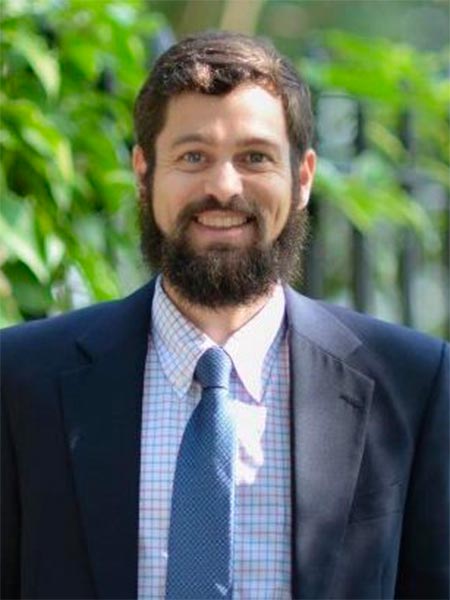
experience
John Hamilton has 12 years of experience providing geotechnical analysis and design for bridge and roadway projects throughout South Carolina. He has a strong understanding of soil mechanics and the major factors that influence geotechnical design on transportation projects. His experience includes shallow foundations, deep foundations, embankments, earth retaining structures, ground improvement, slope stability, settlement, seismic design, geotechnical instrumentation, and construction quality assurance/quality control. In addition, he has a detailed working knowledge of the SCDOT Geotechnical Design Manual (GDM), AASHTO LRFD Bridge Design Specifications, SCDOT Seismic Design Specifications for Highway Bridges, and other current transportation design methods.
What is seismic design and what types of projects do you primarily work on?
Seismic design is the process by which engineers specify types and sizes of materials that provide sufficient strength to resist forces supplied by seismic shaking. I primarily work on transportation infrastructure (roads, bridges, and retaining walls).
People often take for granted the work professional engineers do to help keep the public safe. Why is seismic design so important to helping protect the safety and welfare of the public?
I wouldn’t really say it’s any more important than the other parts of design, but it is important, nonetheless. I think that earthquakes are such a rare phenomenon that people tend to give them more attention when they happen. It is an awe-inspiring amount of force that occurs over a short amount of time and we have little to no way of predicting when they come. If and when a strong earthquake happens, the effects could be devastating and widespread. Roads, bridges, buildings, gas pipelines, etc., could be destroyed. The ability of first responders who need this infrastructure to help people could also be impacted. We often take for granted these functions during normally everyday life until they are not available.
Do you see seismic activity in the Southeast becoming more of an issue in the future?
Seismic activity in the Southeast United States will likely remain calm in our lifetime. I would say a large earthquake won’t occur until around the 2200–2300 timeframe. Seismic design will likely remain a priority, but I see it changing frequently over this time span as we learn more about earthquakes on the East Coast. Most of our seismic knowledge is based on the West Coast, and we have fundamentally different soils and tectonic plate theory on the East Coast.
What advice would you give others who are debating whether or not to get their P.E. license?
As long as you are currently practicing in the field in which you want to be licensed, I would say everyone should go for it. The test is a lot more challenging the further you are away from school, but it is also valuable to get as much work experience as possible before taking it. I would recommend working at least three years prior to attempting the PE test. Most of the stuff I studied wasn’t on the test, but most of what I learned from work was on the test.

The Southeast region of the United States is not typically thought of when you think of seismic activity and earthquakes. How common are earthquakes in the Southeast and what problems and/or issues most often arise from seismic activity in the region?
Large earthquakes in the southeast are rare, but smaller earthquakes happen more often than you may think. We often don’t perceive the smaller earthquakes and they typically don’t produce any visible damage, so we typically don’t pay them much attention. There is a theory that large earthquakes have a recurrence period on the order of a few hundred years. Based on the theory, we shouldn’t expect another large earthquake any time soon, but we need to protect our infrastructure and general livelihood in case this theory is proved incorrect. Charleston, South Carolina, is considered the highest seismic zone on the East Coast based on a 7.3 magnitude earthquake that happened near North Charleston in 1886. The 7.3 magnitude earthquake is comparable to that of California’s seismic activity, but it is more confined to the general Charleston area. The most notable effects following an earthquake are collapse of structures and lateral movement of the earth. These results tend to manifest themselves through what is known as soil liquefaction. This term is what it sounds like. The ground shakes, and the soil becomes liquefied and loses most of its strength. When the soil loses its strength, it loses its ability to resist the structural loads imparted by the structures. It can either move slightly and nothing major would happen, or it could move a lot and devastating effects could happen.
How has your P.E. license benefited you in your career?
The P.E. is a vital component to my job. I can’t envision my career without it. My job requires constant engineering, problem solving, and critical thinking. The P.E. license allows me to sign/seal engineering reports which is our primary deliverable. I could not do my job without the P.E. license.

